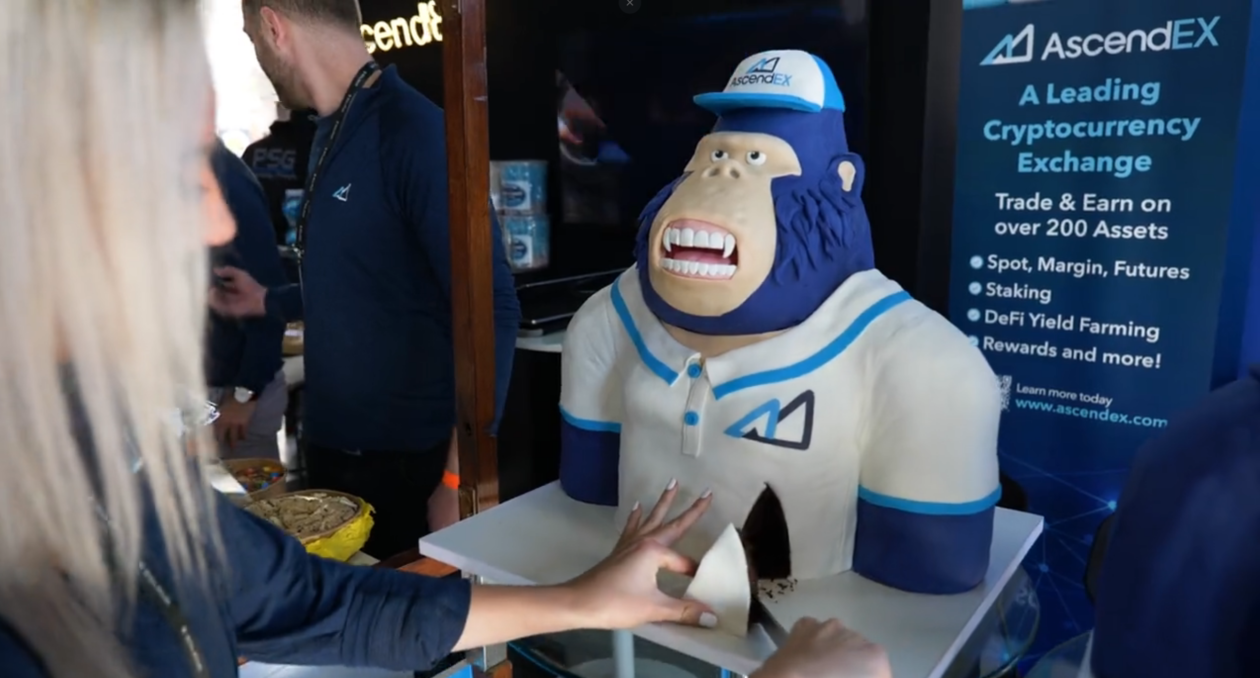After a stratospheric rise in the second half of 2021, the Solana blockchain — a leading so-called “Ethereum killer” — held its first global offline conference in Lisbon this week, giving its community and the industry as a whole plenty to look forward to in the coming months. Perpetually awash with lighting in Solana’s signature purple, the sold-out “Breakpoint 2021” event ran from Nov. 7 to Nov. 10, consisting of parties and panels showcasing the promise of the technology and projects being built on the emerging blockchain.
Anticipation for the event was running high in the community as SOL, the native cryptocurrency of the blockchain, reached a new all-time high (ATH) of US$260 on Saturday before the conference, overtaking USDT and Cardano on Monday to briefly reach fourth spot in the crypto top 10. It has lost some ground since, however, and was trading in fifth position at US$232 at press time, according to CoinMarketCap. SOL is up more than 850% from the beginning of July, after the successful launch of its non-fungible token series “Degenerate Ape Academy” and fast transaction speeds helped catapult the altcoin into the crypto top 10 in the past few months.
Arguably the most significant development of the conference was the announcement of a new partnership between Solana and the venture capital arm of Reddit co-founder Alexis Ohanian, Seven Seven Six, to invest US$100 million into decentralized social media. Decentralization and blockchain in social media have become the current zeitgeist since Facebook CEO Mark Zuckerberg’s announcement the social media giant was exploring the metaverse as the next stage of social media’s development.
Many industry watchers consider this integration of technologies as bringing about a new era, loosely defined as “Web 3.0,” in which through cryptocurrency’s ability to allow for value to be transferred digitally, it has the opportunity to transform the existing incentive structures of the internet which has up until now largely been built around advertising. This shift can be seen with the emergence of the play-to-earn model of gaming, such as in the runaway success Axie Infinity, or through the emergence of decentralized, immersive non-fungible token marketplaces such as ones found on Decentraland.
“Web3 turns users and creators into owners and stakeholders, a change that can’t come soon enough to social media … social media in the metaverse will be a collection of millions of self-sufficient communities,” said Raj Gokal, COO of Solana Labs, in a statement shared with Forkast.News, adding that as the creator of one of the most widely used social media platforms, Reddit, Ohanian was perfectly positioned to help build these new projects.
Blockchain is already being used to change this infrastructure in some projects, however. Launched by one of the co-founders of the popular browser Mozilla Firefox, Brave is a privacy-focused web browser that blocks invasive ads, cookies and cross-site trackers. Recognizing people’s attention is the driving resource under the current economic model of the internet, Brave compensates users each time they see an ad — if they choose to opt-in — with their own utility token, the Basic Attention Token, which can be paid forward to content creators.
At the Breakpoint conference, it was announced that Brave will be partnering with Solana to bring wallet features into Brave’s Web 3.0 desktop and mobile browsers in the first half of 2022 to the browser’s 42 million monthly active users. “For billions of people, the mobile web will be their gateway to Web 3.0 … Deep integration with browsers is key to helping dApps (decentralized applications) build the best web experiences,” said Anatoly Yakovenko, CEO of Solana Labs.
Another feature of Solana that garnered the blockchain a great deal of attention was the launch of its cross-chain communication bridge “Wormhole” in August, which allows other decentralized finance networks to move tokenized assets across blockchains. With speeds of 65,000 transactions per second — Solana is roughly 2,000 times faster than Ethereum and 40 times faster than Visa, making it an attractive network to build on. During the Breakpoint conference, it was revealed that the Polygon Network, one of the largest blockchain ecosystems, will be added to the list of linked Wormhole networks.
“Wormhole’s new bridge will greatly expand the reach of the dApps, games, and NFTs that are native to the Polygon ecosystem,” said Arjun Kalsy, vice president of Growth at Polygon, in a statement shared with Forkast.News. “With improved interoperability, lower transaction fees, and the ability to leverage the power of other blockchain networks through Wormhole, we expect to see a massive expansion of Web3 capabilities in the near term.”
Blockchain analytics firm Nansen also announced the planned Q1 integration of a Solana dashboard to its platform to inform institutional and retail investors seeking to explore top-performing DeFi protocols, NFT launches and information on the Solana ecosystem as a whole. This adds to Nansen’s existing analytics platform with data from over 100 million wallet labels across Ethereum, Polygon, Fantom and Binance Smart Chain.
In a statement, Yakovenko said that he was pleased that platforms like Nansen were adding their support for Solana. “Market intelligence and data access plays an important role in blockchain ecosystems,” he said.
As the conference wound up and the last few glasses of champagne were being drained, Gokul reflected on the significance of the event during the closing ceremony. “I think everybody’s been talking about the energy across the whole set of events as the beginning of something really special,” he said.





